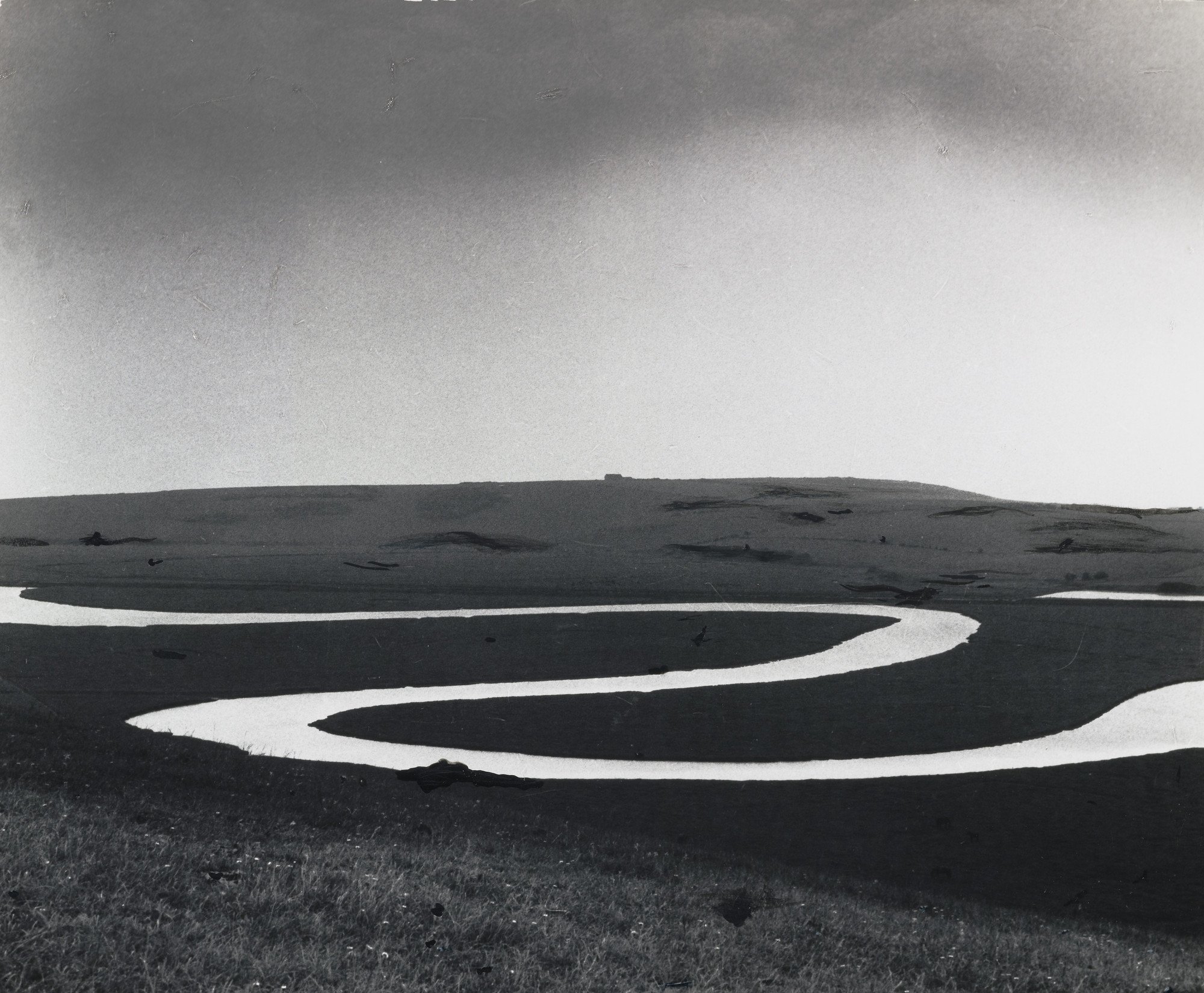
Bill Brandt:
A Retrospective
Curated by John-Paul Kernot, Director
The Bill Brandt Archive, London
British photographer Bill Brandt (1904-1983) is an acknowledged master of the twentieth century. Brandt’s early work documents with great sensitivity the fixed social contrast of pre-World War II life in Britain, from farmers and miners to landlords and industrial barons. Later he would shift to a surreal, formal experimentation that connects him with British artists in other media such as Henry Moore and Francis Bacon. But the divisions in his career are not precise— his vision, unconfined by easy categories, ranged widely from direct photojournalism to moody, atmospheric landscapes to stark, revealing portraiture to high-contrast nudes, distorted with very wide angle lenses.
Even though much of of Brandt’s work was driven by specific historic periods and events, his endless invention and continual search for ways to expand the medium make his work fresh and timeless. So strong was his presence during the middle of the twentieth century that histories of photography often imply that he was the only photographer in Britain during that period. His influence can still be felt today in the work of Chris Killip and others of the present generation of socially committed photographers in the United Kingdom.
WORKS
150 vintage photographs
DIMENSIONS
16 x 20 to 20 x 24 (inches)
40,64 x 50,8 to 50,8 x 60,96 (cm)
SPACE REQUIREMENTS
500 linear feet (152.4 linear meters)
INQUIRIES
exhibitions@curatorial.org
626.577.0044
ARTIST BIOGRAPHY
Bill Brandt (born Hermann Wilhelm Brandt; 2 May 1904 – 20 December 1983) was a British photographer and photojournalist. Born in Germany, Brandt moved to England, where he became known for his images of British society for such magazines as Lilliput and Picture Post; later he made distorted nudes, portraits of famous artists and landscapes. He is widely considered to be one of the most important British photographers of the 20th century.
After working as Man Ray’s assistant in Paris in 1929, Brandt returned to London in early 1930s to become a freelancer for the Weekly Illustrated. Some of this work was later published as his first book, The English at Home. Reading J. B. Priestley’s An english Journey prompted Brandt to photograph the destitute villages and mining towns of northern England. In contrast to his contemporaries in Depression America, Brandt developed an expressive, high-key style that pushed accepted boundaries of documentary and journalism. During the “blitz” of World War II, Brandt photographed London by night and followed the crowds into the Underground to scape the bombs. Henry Moore sketched the same sleeping bodies to produce abstract sculptures. After war, in addition to his distinctive, sometimes ominous landscape and topographic work, Brandt documented his artist and writer contemporaries, providing a comprehensive insight into this period of great creative ferment. In the early 1950s Brandt left his documentary style behind and returned to his interest in the surreal developed earlier in Paris. His formally plastic and haunting nude studies from this period were published in 1961 as Perspective of Nudes.
















